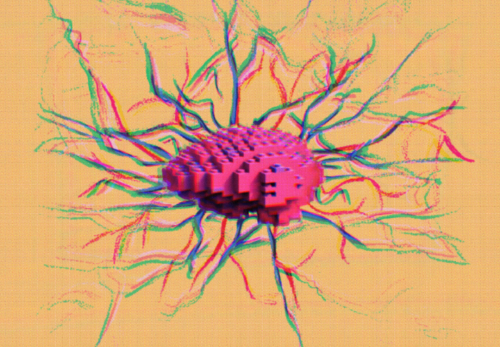Image Courtesy of Lana Zheng.
Lego Hogwarts, Lego Krusty Krab, Lego Death Star. Sure. Fine. But what if there was an artificially intelligent, maze-solving Lego robot car? Well, that’s exactly what Paschalis Gkoupidenis and his team at the Max Planck Institute for Polymer Research in Mainz, Germany, have created.
The idea of artificial intelligence (AI) is the ability to harness the brain’s efficiency at processing information on a technological level. Currently, a popular approach to achieving AI is the functional representation of biological information processing systems with artificial neural networks. These artificial networks are achieved by “executing algorithms” which loosely represent the function of the nervous system in traditional computer architecture. While this field has shown great promise for complex processing and efficient computing, the nature of AI’s programming limits its interactions with our living world and its many triggers and signals. In this manner, it also lacks the efficiency and computing capacity to model biological systems.
Alternatively, biological neural functions can be directly emulated with unconventional devices, circuits, and architectures. This hardware-based paradigm of brain-inspired processing is known as neuromorphic electronics, which can potentially be far more efficient at computing and processing. Still, in order to learn, intelligence requires “embodiment” through a physical or virtual body to receive environmental signals and act on the environment. “Robotics, with its combination of a physical body and embedded neuromorphic electronics made of organic materials, can offer exceptional capabilities in distributed control, learning, and perception,” Gkoupidenis said. By connecting the sensors with the actions of an intelligent machine, the associations between the electronics and the sensors (known as “sensorimotor integration”) allow the machine to perceive the environment. When these associations change as a function of time, machines can learn and improve performance towards a target behavior.
“This idea came after a morning coffee discussion with Professor A. Salleo in southern France. Back then, I was a postdoc researcher in France, and Salleo was on sabbatical from Stanford,” Gkoupidenis said. “This was a really interdisciplinary project, so planning required knowledge in a wide range of disciplines and techniques such as electronics, microfabrication, 3D printing, and of course, robotics and biology.”
With this team, Gkoupidenis outfitted a Lego car with a neuromorphic circuit, which could be shrunk down to a few micrometers, similar to the size of biological neurons. This circuit created a connection between the sensors and the robot’s motors, which are used to help the robot car perceive its surroundings and move around within it. “The key property of the circuit is that it’s trainable, meaning that its electrical properties change gradually. This is achieved by gradually accumulating and storing ions inside the devices when the robot fails to achieve its task.” The robot’s mission was to make its way out of a maze of hexagonal unit cells in a honeycomb pattern. The researchers created a path towards the maze’s exit by putting visual cues (circle arcs) at specific maze intersections that indicate a left turn, with right-turning as the baseline movement. Every time the robot failed to find the exit, it would hit the borders of the maze with its touch sensor. This interaction was then received by the neuromorphic circuit, allowing the robot to gradually learn the correct route out.
Spoiler alert: the Lego robot car found the exit!
What is incredible about Gkoupidenis’ research is their use of organic materials to make the circuit, which can conduct both electrons and ions. By using ions as the carriers of information instead of electrons, as in classic electronics, neuromorphic devices more realistically emulate biological processes. Furthermore, organic devices are soft, flexible, and even stretchable, potentially allowing these circuits to be distributed on a robot—which is exactly what happens in living organisms where intelligence is literally distributed everywhere throughout their body. These concepts can be useful across a wide range of robotic systems, whether at home or in industry, agriculture, and the oceans. “We will see similar concepts in the future in smart bioimplants, for instance, artificial limbs or bioelectronic devices that learn gradually to live efficiently and together with their ‘owners.’ This will be a new type of hybrid, artificial-biological intelligence, in which both worlds operate synergistically,” Gkoupidenis said.

